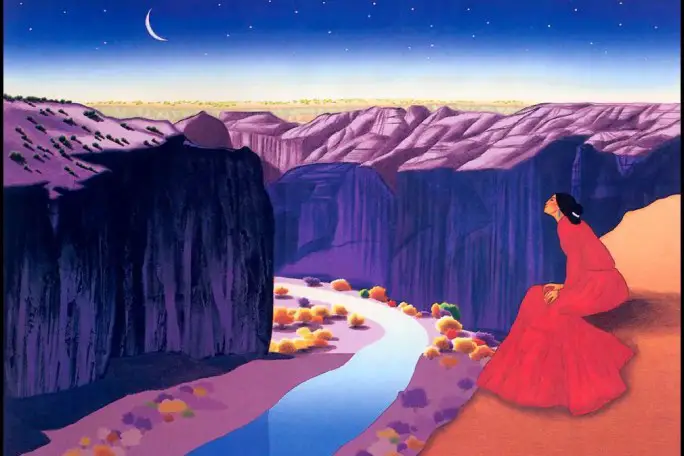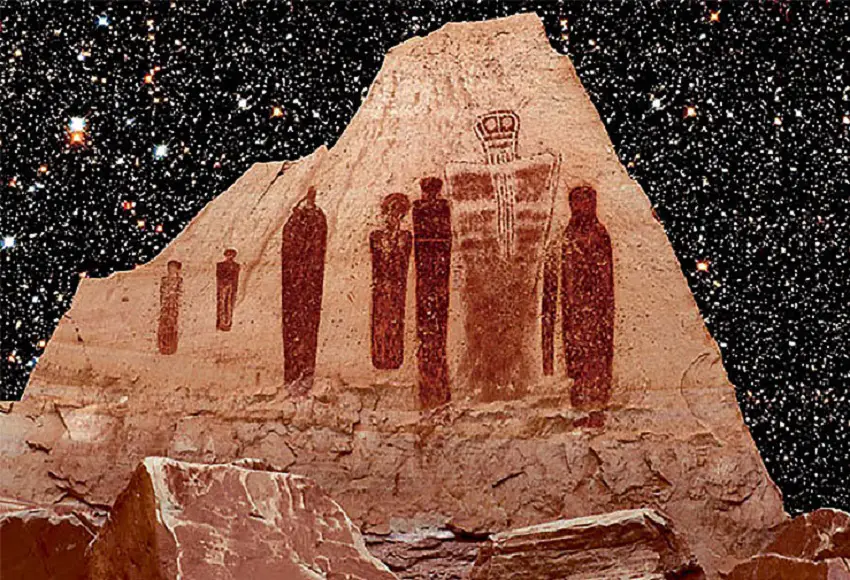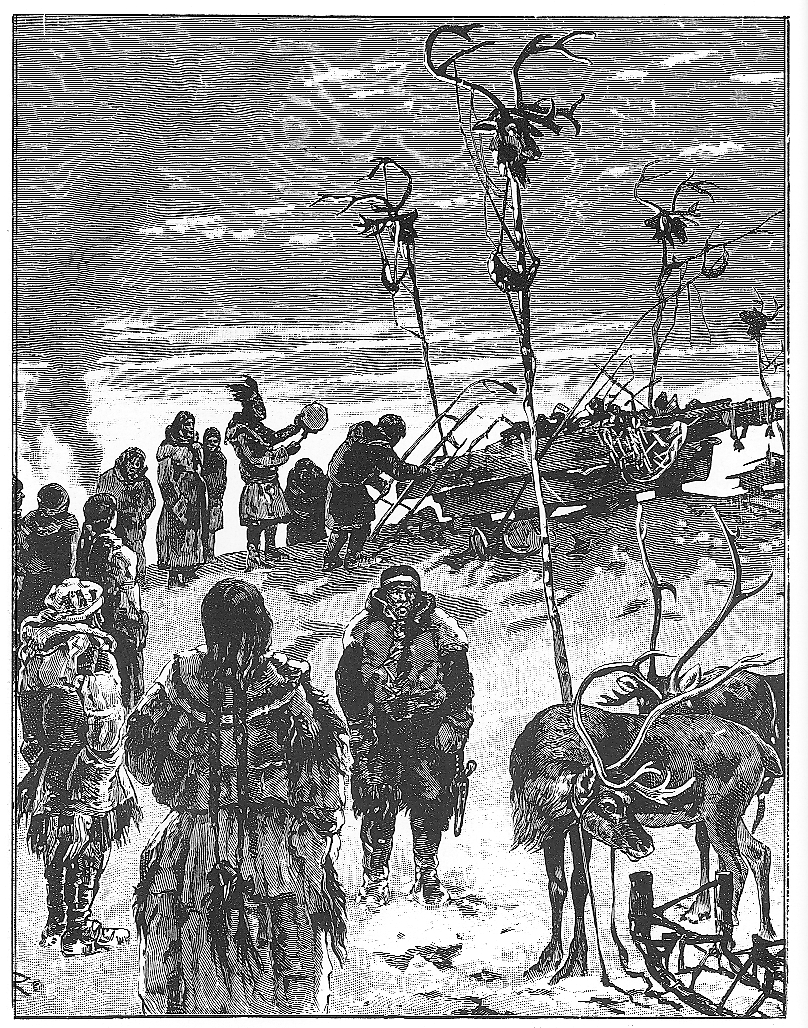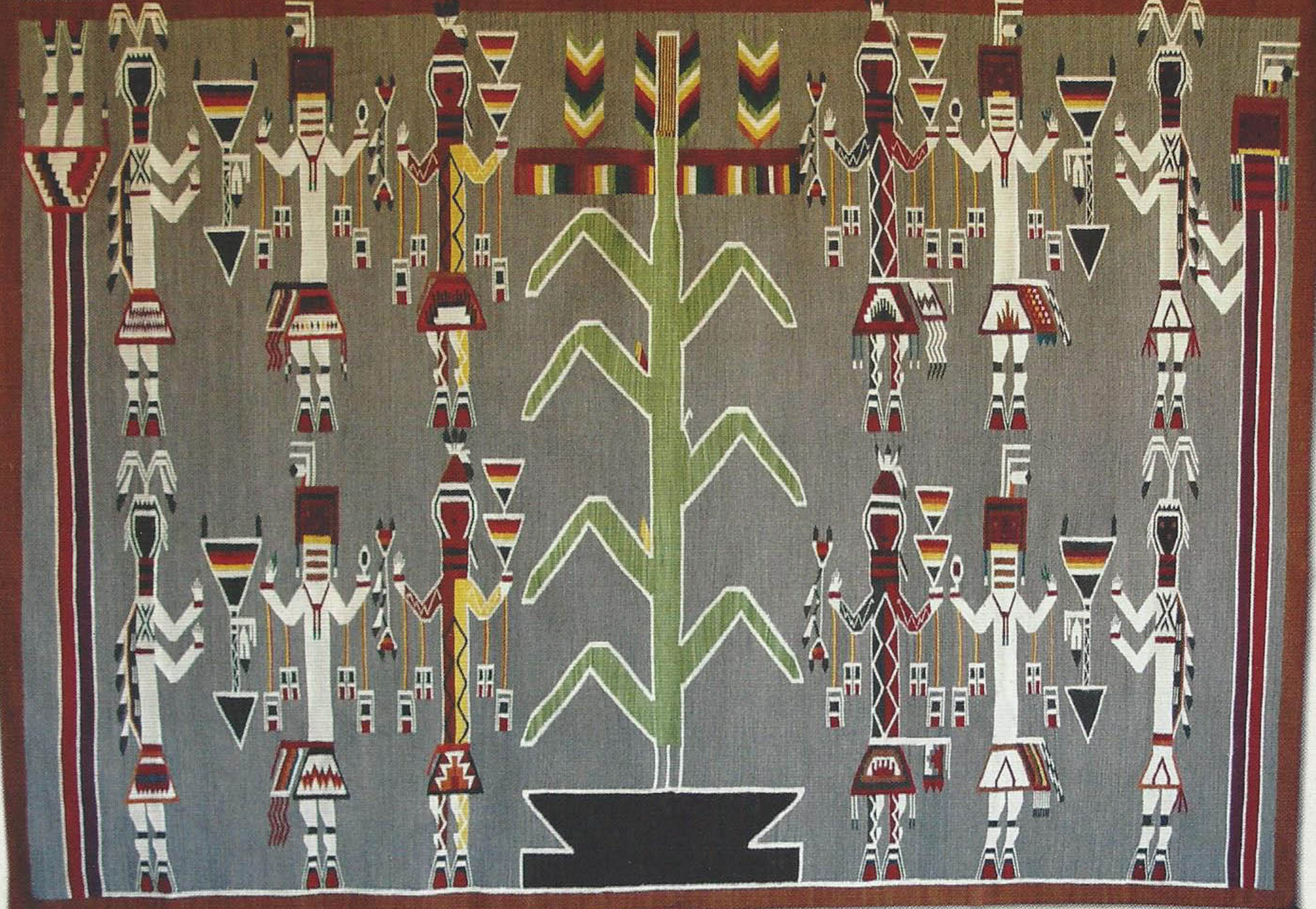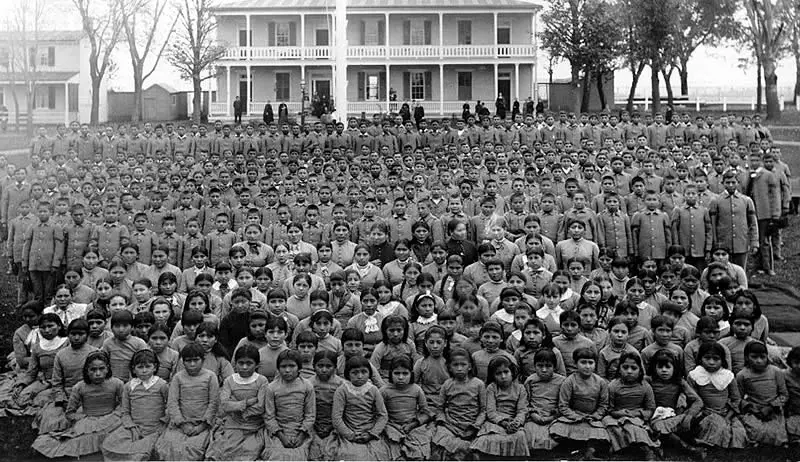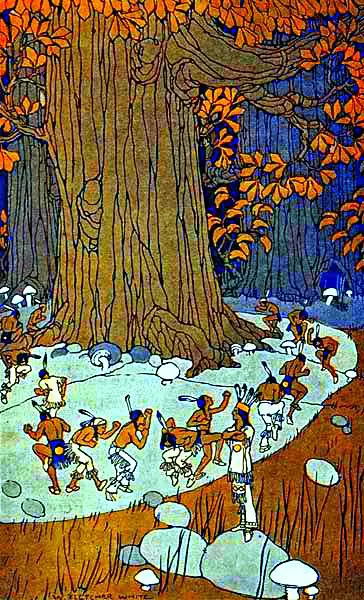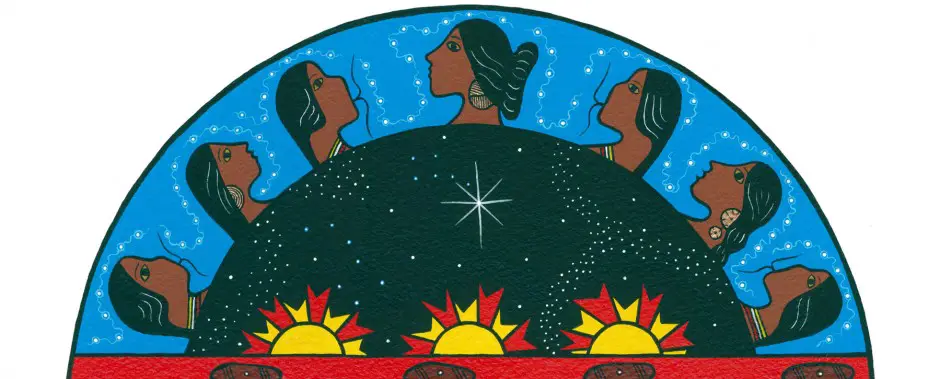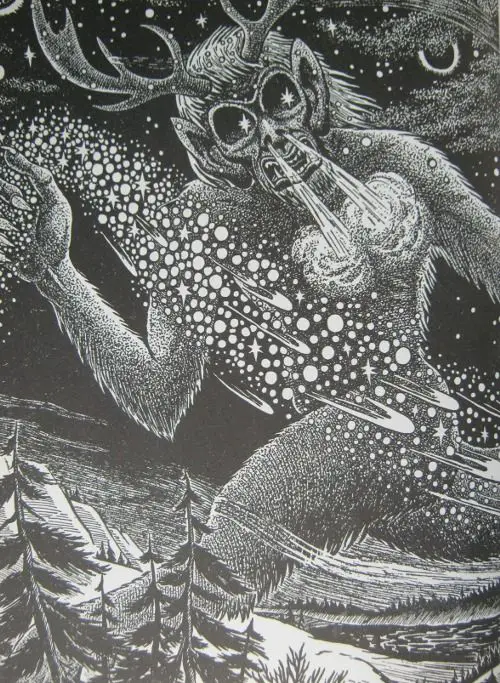Tag: Native Americans
"The return of the Star Peoples". The X-Files of the Indian Reserves
Usually, when we talk about UFOs and "alien abductions", we tend to mistakenly consider the phenomenon as exclusively Western, mostly limited to American citizens of European descent. However, on the same US soil, the native Amerindians also live within the reserves have a lot to tell about it, and after decades of silence they opened up with author Ardy Sixkiller Clarke, who has collected their testimonies in some books, including "The return of the Star Peoples", recently translated into Italian by Venexia Editrice.
Spiritual Animals: Native Traditions of Subarctic Canada
The 'spiritualization' of animals and their respective archetypal functions in the holistic view of the Native Americans of the far north
Yenaldooshi, the shape-shifting "Skinwalker" of Navajo folklore
skinwalker, “He who walks in the skin,” is an English word that loosely translates the Navajo term Yenaldooshi o Naglooshi, which literally means "with it, walk on all four". Both of these definitions refer to a particular type of "shapeshifter" in Navajo folklore, a sorcerer able to assume the forms of different animals by wearing their skin. The Skinwalkers they can transform into wolf, deer, crow, owl or even into fireballs darting in the sky, but the most recurrent metamorphosis associated with them is that of coyote. The result is a monstrous hybrid that roams the wastelands of the southwestern United States at night, bringing pain and torment to humans. The Skinwalkers they can move at great speed, so much so as to equal a speeding car, but their movements are never completely natural: the footprints they leave on the ground are uncoordinated, and there are those who say they have seen them run backwards, with limbs twisted into impossible positions.
The symbolism of the Spiral: the Milky Way, the shell, the "rebirth"
di Marco Maculotti
Having analyzed in recent months [cf. Cosmic-agrarian cults of ancient Eurasia] a series of rites, myths and deities connected to the theme of cosmic rebirth, we want in this appointment and in the next ones to focus our attention on some symbols, which we have already mentioned, which archaic man recognized as images capable of eschatologically raising him towards the understanding of this mystery.
The secrets of Twin Peaks: the "Evil that comes from the woods"
di Marco Maculotti
«We will meet again in 25 years"—So Laura Palmer promised, trapped in the parallel dimension called" Black Lodge ", to agent Dale Cooper in the last episode of the second season of The secrets of Twin Peaks, which aired in the USA on 10 June 1991. What until recently seemed destined to remain a promise without a sequel is now on the verge of being kept: on 21 May the first episode of the third will be broadcast in America, highly anticipated season of the serial, which will pick up the subject exactly where we left off, with a gap of a quarter of a century. Waiting for the pilot episode of the new season to arrive on our television screens (May 26, on the channel Sky Atlantic) we want to propose to our readers an analysis of the more specifically "esoteric" themes they have made Twin Peaks a real media event of the nineties.
The "myths of emergence" in the traditions of Native Americans
di Marco Maculotti
According to many mythical traditions, in the beginning the first members of the human race were generated in the bowels of the Earth, within underground worlds similar to cavernous wombs. The myths of emergence, particularly prevalent among Native American populations, provide us with the best examples of such subterranean realms. The mythical tales tell of how the first humans were brought to the surface to live in the sunlight only after they remained for a long time under the earth's surface, in the - so to speak - "larval" state, and after developing a rudimentary physical form. and a human conscience. According to native peoples, this emergence from the underworld marks the birth of man in the present era - or, to use a typical American term, the "Fifth Sun" - and also represents the transition from childhood and dependence on womb of Mother Earth to maturity and independence.
The genocide of natives in Canadian Indian Residential Schools
[Extract from the graduation thesis Recognition of the rights of the Native Peoples of Canada2015]
The Indian residential school system
One of the most shameful pages concerning Canadian federal institutions is undoubtedly the one concerning the educational sector. Already in the second half of the Ottocento, the British Crown had laid the groundwork — first with the Gradual Civilization Act of 1857, then with theIndian Act of 1876—to make populations native a mere matter of their own competence, effectively labeling them as a calegally lower tier of Canadian citizens. The Crown's goal was ovviamente to assimilate the native populations within the framework legal Canadian to make them his subjects. This became possible starting from the theosracist stories that the English colonists and Catholic missionaries shared: the "Indians" they represented a lower degree of civilization and civilization, their religion was demonic, the task of the "civilized" and God-fearing Europeans would therefore have been that of "killing the Indian in them" to make it possible at the same time conversion to the "one true God" and assimilation into the legal system of Western matrix that was rapidly forming. The English Crown and the four Christian Churches (Roman Catholic, Anglicana, Presbyterian and Methodist) came to the conclusion that the fastest way is safe to ensure the forced assimilation of the natives should have been based on the eeducation of the new generations: for this reason starting from the last years of the nineteenth century thousands of native children were forcibly removed a year agomiles to kick off the Indian Residential Schools program.
The mysterious Natchez Indians, Children of the Sun
Among the myriad of populations that once inhabited the vast prairies of North America, the Natchez of the Southern Mississippi Valley. In fact, although belonging to the confederation of Cree tribes of the Muskogee language, they spoke a peculiar dialect and very distinct from that of the other populations of the South-East, called Natchesan. From the few sources that history has handed down to us it seems that their culture, of a sedentary type, was born around 700 AD and that it was strongly influenced by the great Mesoamerican civilizations, especially as regards the cult of the Sun — and of the deified ruler as his son—And the voluntary practice of immolation as a practice worthy of the highest honor.
The "Little People" in Southeast Native American folklore
The belief in the Little People is widespread not only in Europe, but also among the native peoples of North America. In this article we analyze the body of beliefs relating to the "hidden people" in the traditions Cherokee, Choctaw, Creek, Seminole and Chickasaw
The Sacred Circle of the Cosmos in the holistic-biocentric vision of Native Americans
[Extract from the graduation thesis Recognition of the rights of the Native Peoples of Canada2015]
For millennia, American Indians have regarded the earth as a church, the bullion tables as altars, all of creation as pervaded by sacred vital forces, in a universal circle of equals, one related to the other in a vital balance. 200 The habitat represents the stage on which the realm of spirits and the physical world perform. Plants, forces of nature, celestial stars, human beings, herbs that heal and allow visions, are all part of a "family-run system", 201 in which all are relatives, "all equally children of the Great Mother Earth". The circle of the native universe contains in an inseparable whole the entire existing world, physical and spiritual. Thanks to what we said previously on the importance of the cd reciprocity law in native traditional philosophy, it is not difficult to understand that it is precisely this principle that forms the basis of this particular holistic vision of the cosmos as a single organism composed of a multitude of interconnected and interdependent parts.
Psychosis in the shamanic vision of the Algonquians: The Windigo
di Marco Maculotti
All the images accompanying this article
(except for the cover)
were generated away Craiyon. com
The aboriginal peoples of Canada, often settled in the reserves bordering the border with the United States, are now divided into tribes that bear different names (Algonquins, Cree, Ojibwa), although they mostly continue to share a very similar vision of man and his relationship with nature and with spirits - and, as it is easy to imagine, the same mythology. In the magical-shamanic universe that founds the vision of these populations - today the last bastion of wisdom that characterized the entire native population of North America for centuries - the spirits with which man can enter into communication are generally called manita - the same word that, with a capital letter, identifies the universal divine Being, the sacred energy that permeates everything.
Cultural diversity and native justice: the "sentencing circle" and the sacred use of peyote among the native peoples of Canada
[Extract from the graduation thesis Recognition of the rights of the Native Peoples of Canada2015]
Following the drafting of the 1982 Constitution and the Canadian Charter of Rights and Freedoms, many academics, lawyers and experts in criminal law and representatives of First Nations they clamored for the implementation of a judicial process more consistent with native values and traditions. The possibility, concerning the creation of an alternative criminal procedure, which takes into consideration the native legal vision and the principles that characterize it, is part of the broader discourse concerning the process towards self-determination and self-government that the native populations of Canada have for some decades now.
The oral tradition of the "Big Stories" as the foundation of the Native Peoples Law of Canada
[Extract from the graduation thesis Recognition of the rights of the Native Peoples of Canada2015]
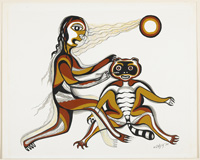 Le First Nations of Canada use the oral tradition to record information considered to be of primary importance, which is collected and shared through a form of literature which holds memory and the spoken word in high regard. Oral transmission allows the normative-behavioral systems of indigenous populations to be subjected, day after day, generation after generation, to continuous creation. A strong point of this methodology is the possibility of reinterpreting traditions in such a way as to come to terms with the needs of the contemporary world, without losing the truth or principles on which the stories are based. Rather, the need for continual modification is based on the understanding that the social context is continually changing, and consequently requires a constant reinterpretation of some of the narrative elements. The fluidity of the tales of First Nations it reflects the attempt to make the deepest sense of the narratives current, adapting it from time to time to the needs of listeners.
Le First Nations of Canada use the oral tradition to record information considered to be of primary importance, which is collected and shared through a form of literature which holds memory and the spoken word in high regard. Oral transmission allows the normative-behavioral systems of indigenous populations to be subjected, day after day, generation after generation, to continuous creation. A strong point of this methodology is the possibility of reinterpreting traditions in such a way as to come to terms with the needs of the contemporary world, without losing the truth or principles on which the stories are based. Rather, the need for continual modification is based on the understanding that the social context is continually changing, and consequently requires a constant reinterpretation of some of the narrative elements. The fluidity of the tales of First Nations it reflects the attempt to make the deepest sense of the narratives current, adapting it from time to time to the needs of listeners.

